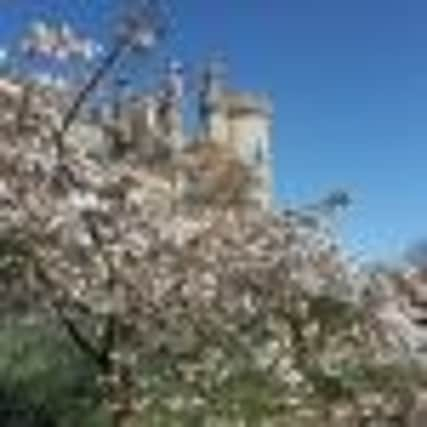Crown imperials are the most striking plants


We have been especially lucky with the warm weather here in the south that’s brought out most of our spring bulbs.
The tulips and fritillaries are stunning at the moment, adding vibrant colour to the gardens as a whole.
Advertisement
Hide AdAdvertisement
Hide AdThe most striking plants in full bloom at the moment, and one of my favourites, are the orange ‘Crown Imperial’ or ‘Kaiser’s Crown’ - Fritillaria imperialis, found in amongst the stone circle of the whimsical labyrinth at the foot of Oberon’s Palace, adding structure and colour to this area of the garden. I’ve also used them as prominent features in the surrounding borders and pots, like everything else this year they are a least 3 weeks earlier than expected and sadly will be here only for a couple more weeks!
Crown Imperials, pictured below, are one of the earliest plants to be cultivated and found from as far west as Anatolia across the plateau of Iran through Afghanistan to the foothills of the Himalayas in the east.
It grows to about 1 meter (3 feet) in height, and bears lance shaped, glossy leaves, has prominent downward facing flowers at the top of the stem and topped by a ‘crown’ of small leaves, hence the name. While the wild form is usually orange-red, various colours are found in cultivation, ranging from nearly a true scarlet through oranges to yellow. They were recorded in John Edwards’ book, ‘The British Herbal’ in 1769 and would have been considered a prized bulb of its time and today.
Well after the flowers have died off the top of the green crown remains giving the plant a different but exotic structure.
Advertisement
Hide AdAdvertisement
Hide AdIn contrast, the pale blossom of fruit trees throughout the grounds gives a mystical but romantic feel that lends itself well to the dramatic backdrop of the of the castle walls and turrets. With the steep grass banks around The Keep being carefully mown by our seasonal helpers, the wonderfully cheeky goats, who come in from their winter estate paddock for the spring and summer months to slowly munch their way through the grass banks of the castle working well along side our groundsman. They are not only an added attraction for our visitors but are an essential ecological part to the upkeep of the castle grounds.
In the flourishing organic kitchen garden we’re busy planting out the broad beans and other seasonal vegetables such as carrots which are grown for the castle and castle restaurant.
Tips from the castle garden team:
Prune early flowering shrubs.
Stake tall-growing perennials.
Continue sowing and planting vegetables outside.
Feed established lawns.
Protect young growth from slugs and snails.
Happy Gardening!
Arundel Castle & Gardens are Open Tuesday to Sundays inclusive and August Mondays and Bank Holiday Mondays. For full ticket details, events and tours visit the castle website at www.arundelcastle.org or telephone Information & Bookings Administrator on 01903 882173 extension 230.
Martin Duncan - Head Gardener Arundel Castle